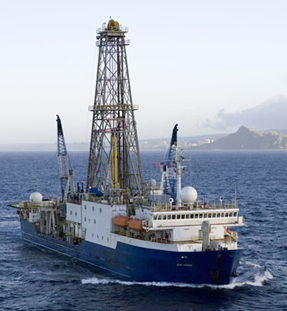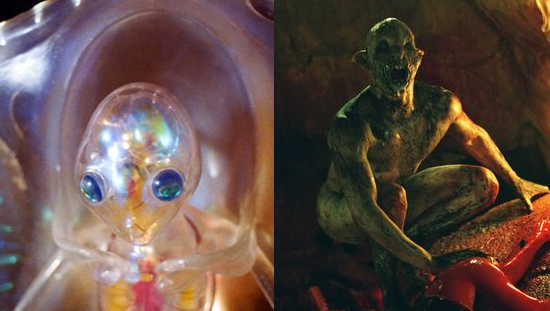As long as we’ve got the funding, we’ll forever be probing the reaches of space as best we can, and that’s all great, but there’s still plenty to learn about the depths of our own planet. Consider our quest to discover new life, which we’ve been scraping away for recently on Mars. But it turns out we’ve got some right under our feet — and boats. Earth’s oceanic crust conceals a vast ecosystem and now scientists have verified the existence of life in the depths.
It started with a wickedly long drill, aimed by the Integrated Ocean Drilling Program on the ship JOIDES Resolution, which started as an oil exploration vessel then was converted by the power of science to discover life beneath the sea.
It’s this sweet rig:
The drill shot down through the water 2.5 km (almost two miles) and through hundreds of meters of sediment right into the oceanic crust off the North American west coast. This is us tapping into the “dark biosphere,” the huge ecosystem which covers 60 percent of the Earth’s surface.
Dr. Mark Lever, microbiologist of the Center for Geomicrobiology, was there to collect, then study, the rock samples they drew back up. He concluded that geochemical processes support life in the porous, basaltic ocean crust — where water reacts with iron compounds — quite unlike the sunlit photosynthetic organisms that support life up on our level.
“So far,” said Dr. Olivier Rouxel of the French INFREMER institute, “evidence for life deep within oceanic crust was based on chemical and textural signatures in rocks, but direct proof was lacking.”
And now it isn’t, because they found organisms in their samples — lots of them. Whole microbial communities thriving, feeding on altered minerals. All right, so the basalt samples are 3.5 million years old and the organisms are so tiny that only chemicals reveal their presence, but the lab cultures have shown that the DNA therein belongs to extant organisms, not fossils. And while they may be small, they’re also legion.
We have to give these researchers credit. Like astronauts, they have to work in some very hard-to-reach places, and in this case it was a collaboration of scientists from the U.S., Denmark, France, Germany, Japan, and the United Kingdom. “Such strong proof for life in the deep ocean crust has eluded scientists for a long time,” said Dr. Andreas Teske of the University of North Carolina.
Dr. Lever is optimistic:
“Life in the deeply buried oceanic crust is supported by energy-sources that are fundamentally different from the ones that support life in both the mud layers in the sea bed and the oceanic water column. It is possible that life based on chemosynthesis is found on other planets, where the chemical environment permits.”
See? To find life on other planets, we’ve got to keep digging up our own intraterrestrial, or unterrestrial, life. Let’s just hope that when we find larger, more obvious lifeforms down in the deep, they’ll be more like the aliens in The Abyss and less like the crawlers in The Descent.
Neither I.T. nor U.T. sounds as adorable as E.T., though they are accurate.
(via LiveScience and PhysOrg, images courtesy of Monsieur Marty on Flickr, Wikipedia, discovery-enterprise.com and thebooksmugglers.com)
- A sunken microcontinent is hiding under the Indian Ocean
- New fossil shows the horrible mouthparts of arthrop ancestor
- Sharks use lightsabers to fend off predators










Published: Mar 15, 2013 06:35 pm